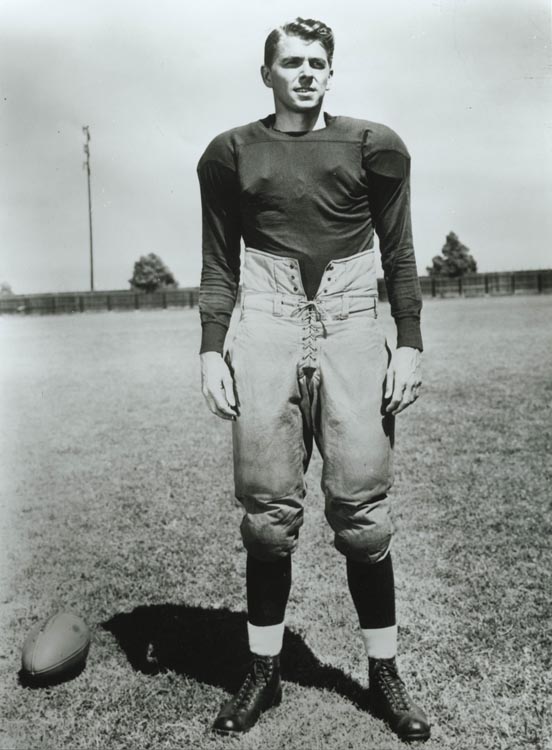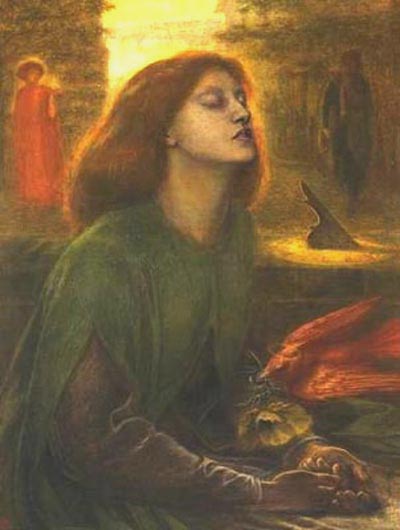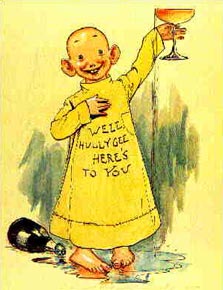My apologies for posting these answers a bit beyond schedule, hope that some of you will find it interesting anyway. All constructive comments are welcome.
1. With the help of the 4 following pics, identify a person (5p):
Nobody managed this one, and it was just my small contribution to the WC Football frenzy.
The answer is:
Diego Armando Maradona,(1960-) legendary Argentinian footballer.
Maradona is by many regarded as the greatest footballer ever, and while I myself have difficulties agreeing with that statement, he certainly was one of the great players - and personalities of the game.
As for the pics.
#1 is the coat of arms of Buenos Aires, Maradona was born in one of its suburbs.
#2 refers to the infamous "God's hand" from the WC quarterfinal in 1986 against England. Because of the recent Falkland Wars, tension in this match ran high, and in the second half, the match still deadlocked 0-0,Maradona showed himself from both his worst and best side. First he played volleyball with Peter Shilton:
http://videos.sportec.es/sportec/goles/manodios.mpg
and then he sealed the match with an incredible soloraid:
http://www.rediff.com/sports/football/2002/may/30mara.htm
The first of this goals, which of course should have been disallowed, was to be dubbed the hand of God. Except for in England, that is.
#3 refers to the number of Maradona's shirt. Quite a few dominating players was number "10", like for instance Platini, Rummenigge, Zico, Boniek and Hagi.
#4 is the coat of arms of the Italian club Napoli, where Maradona had a successfull carreer, including winning the UEFA cup (1989)
2. Why was Ronald Reagan called "The Gipper" (4 p)?
Before Ronald Reagan became an undistinguished US president, he was an undistinguished actor. Arguably one of his best roles was the one
portraying the college football player George "the Gipper" Gipp in the film
Knute Rockne, all American
The famous line "win one for the Gipper" from said film was later to be used by Reagan as a political slogan.
3.
This painting depicts a scene from a famous literary work.
What work is that (5p) and what was the name of the painter (7p)?
The painting is "Ophelia's death" from William Shakespeare's
"Hamlet" and it is painted by
John Everett Millais.
The painter was one of the leading figures of a particular artistic group. Which group was that(7p)?
The Pre-Raphaelites, a group of English painters, poets and critics.
This painting has a tragic epilogue. The model, the beautiful Elisabeth Siddall, herself a member of the group and married to one of its most prominent members, Dante Gabriel Rossetti, got ill due to repeatedly having to pose in a tub of water, and died a few years after.
Here is his hommage to her; depicting her as Beatrice from The Divine Comedy.
Dante Gabriel Rossetti: Beata-Beatrix
4. What do the following names have in common: Amanda, Dorian, Grazyna, Jessica, Lucinda, Orville, Pamela, Vanessa (4 p)?
They are all invented by writers.
Amanda was created in the 17th century by playwright Colley Cibber
Dorian comes from the novel "The Picture of Dorian Gray" by Oscar Wilde
Grazyna; "beautiful" in Lithuanian, comes from the poem of Adam Mickiewicz by that name.
Jessica comes from the "Merchant of Venice" by William Shakespeare.
Lucinda is from "Don Quixote" by Miguel Cerantes de Saavedra
Orville was invented by 18th century writer Fanny Burney
Pamela was first used by Philip Sidney in the 16th century poem "Arcadia".It might mean "all sweetness" (From Greek pan=all, meli =honey).
Vanessa was created by Jonathan Swift.
5. Here are two depiction of an event. What event was it (7 p)?
The battle of Kulikovo aka Battle on the Snipes' Field (8.9.1380) where combined Russian armies defeated a larger force of the Golden Horde. This event was not only the beginning to the end of the Mongol rule in Russia, but also played an important role in unifying the Russian nation.
Also, for 6 p each, identify the two men on the first picture, as well as the man in the middle on the white horse on the second for 3 p.
The first picture in the duel of the champions of the fighting parties;
Aleksander Pereshvet and
Temir-murza (Chelubey). They killed each other in the first run, and the Russian legend that states that Temir-murza fell while Pereshvet remained in his saddle, is probably just that - a legend.
The second picture shows the leader of the Russian forces,
Grand duke of Vladimir, Dmitry Ivanovich who earned the moniker Donskoy (of the Don after this battle).
6. A common pejorative term for a certain type of printed media is "yellow press". But what is the origin of this term (3 p)?
I was looking for something like this:
When Joseph Pulitzer bought New York World in 1883, it was turned into a journal concentrating on scandals, sensations and human-interest stories. Additionally, it was also in Pulitzer's own words intending to"expose all fraud and sham, fight all public evils and abuses, and to battle for the people with earnest sincerity".
This, combined with the cartoons of Richard Outcault turned out to be a success formula,
Two years later Pulizer got competition from The NewYork Journal owned by William Randolph Hearst, and in response produced a colour supplement including Outcalt's creation The Yellow Kid.
This character became so popular that Hearts eventually bought over Outcault while Pulitzer got a certain George Luks to continue drawing for him.
The important part The Yellow Kid played in this circulation war between those two newspapers, resulted in it becoming known as yellow journalism.
Many of the features of yellow journalism was to become regular in many a US and European newspaper such as banner headlines, sensationalism and an emphasis on illustrations.
However, I also accepted the simpler explanation that newsprint at the time was rather more yellow than white.
7. Below are the pictures, names and the years of birth and death of five prominent people from the Age of Enlightenment. Put them together correctly and earn 4 p for each correct row.
A -4 - b
B -1 - e
C -5 - a
D -3 - d
E -2 - c
8. Here are three creation myths. From which cultures do they come from (3 p each)?
1.
Maori
2.
Mande (West Africa)
3.
Hopi (North America)
9.What is Maria Sibylla Merian known as (5 p)?
Maria Sibylla Merian(1647-1717) is sometimes referred to as
the mother of entomology.
She came from a distinguished and wealthy family of artists, was trained as one herself, and married another artist at the age of 18. While her husband pursued his artist carreer. Maria turned to trade and started business as a seller of painted silk and other fabrics.This also opened up for her the field of studying insects.
Having already painted insects in her childhood, she now started out to depict the life cycles of moths and caterpillars.Her first published book was entitled
Wonderful Metamorphosis and Special Nourishment of Caterpillars.
Then in her late 30's she started a new life. She left her husband and joined a religious community. At 52 she moved to Surinam where her group had a mission station, and continued her studies, which resulted in a study of the insect life there, while also including keen anthropological observations.
Maria's reputation due to her pioneer work grew during the rest of her life and continued in the 18th century.
According to Ciceronian, she was on the 500 DM note.
I didn't know; I only have a handful of OstMark...
 10.
10. What was the Darien scheme (6 p)?
A failed venture to start a Scottish colony in Acla, Panama.
More about it can be found here:
http://www.historic-uk.com/HistoryUK/Scotland-History/DarienScheme.htm
11.What is the etymology of the following countries:
1.Barbados:
The bearded ones (Os Barbados) was a name given by the Portuguese explorer Pedro Campos because of the fig trees on the island, which roots resembled beards.
2.Croatia:
A latinization of Hrvatska. It probably comes from a Sarmatian word for herdsman.
3.Gambia:
After the river Gambia that runs through the country. It is supposed to be derived from the Portuguese word "cambio" (trade, exchange).
4.Guatemala:
Maya for "land of trees".
5.Kyrgyzstan: In Persian "kyrg"=forty, "yz"=tribes, "stan" is "land", so Kyrgyzstan is
"the land of forty tribes".
6.Moldova: This is a disputed one, but the most plausible seems to be that it comes from the
Moldova river which possibly comes from the Gothic mulda (dust) .
12. The poem below is written by one who resided in a state not known for its love of art. What was the poet's name (2 p). and what state did he reside in (1 p)?
Tyrtaius, who residedin the ancient Greek polis
Sparta.
According to a tradition which authencity is doubtful, the poet was born somewhere else. Where was that (2 p), and what was the reason for that he settled down in this state (2 p)?
he is supposed to be
Attic, and the story goes that during a war with Messenea, the Spartans consulted the Oracle, and was told they needed an advisor from Athens. Sparta sent a delegation to Athens asking for assistance, and
to mock them the Athenians gave them Tyrtaios, a small deformed man unable to carry weapons. However he proved to be the right man anyway since his martial poetry gave the Spartans the necessary encouragement.
13. What connects John Steinbeck, Abbie Hoffman and James Randi (6 p)?
Pigasus, a pun on Pegasus.
This is John Steinbeck's personal stamp:
which had the Latin motto Ad astra per alia porci (to the stars on the wings of a pig).
Abbie Hoffman was one of the leaders of the Yippies, who in 1968 ran the pig Pigasus as a candidate for US president.
James Randi, famous magician and sceptic instigated the Pigasus award for exposure of parapsychological frauds. The original name of this award was the Uri Award after that rather doubtful character Uri Geller, but in 1997 it was renamed.
14. What was the Whiskey Rebellion (4 p)?
I can do no better than to quote YNCS' answer on this one:
YNCS said:
The Whiskey Rebellion was an American Constitutional crisis in the 1790s. The Federal government imposed a tax on whiskey. The farmers, mainly in western Pennsylvania and Western Virginia, objected to the tax, which was higher for small distillers than larger ones. Also, the farmers were short of cash, which made paying the tax difficult for them. They harrassed the tax collectors ("revenooers"), tarred and feathered a couple of them, and generally refused to pay the tax.
George Washington ordered federal marshals to serve court orders requiring the tax protesters to appear in federal district court. He invoked the Militia Law to summon the militias of Pennsylvania and Virginia. Washington, along with Hamilton and "Light Horse Harry" Lee, marched at the head of the militia marched to Western Pennsylvania (to what is now Monongahela, Pennsylvania) and quickly suppressed the revolt. The rebels afterwards hid in the woods, but some were captured. Two men were convicted of treason and sentenced to death by hanging. Washington, however, pardoned them on the grounds that one was a "simpleton," and the other, "insane."
15. Only one South American nation send organized troops to fight with the Allies in the Second World War. Which nation was that (3 p)?
Brazil. A division-size Brazilian Expeditionary Force fought in Italy under the command of the U.S. Fifth Army from August 1944 until the German surrender in May 1945.
16. Here is a depiction of a famous ruler. Who was he, and which country did he rule (3 p)?
King Mansa Musa of
Mali (14th century). As far as I understand, he is in Civ4.
And finally, a bonus question:
Why is the original Eau de Cologne named 4711 (3 p)?
Eau de Cologne was originally created in the 18th century by Johann Maria Farina, an Italian who had settled down in Cologne, Germany.
In 1803, a merchant Wilhelm Mühlens bought the company right and license from one Farina who had nothing to do with the original business family.In 1835 a court decided to render this transaction invalid, leading to the liquidation of the 20 companies Mühlens had sold licences to.Finally, in 1883, Wilhelm Mühlens' grandson Ferdinad was sentenced never to use the name Farina again and then
chose his house number as the new name for his brand and company.

 Thanks to all of you who participated; the answers will be posted tomorrow.
Thanks to all of you who participated; the answers will be posted tomorrow.





 The battle of the quiz-masters, huh?
The battle of the quiz-masters, huh? I now look forward to luce's quiz, and I will keep the questions I've already made for when it happens to be my turn again.
I now look forward to luce's quiz, and I will keep the questions I've already made for when it happens to be my turn again.